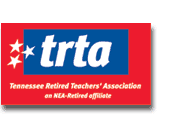Are You Taking Unneeded Required Minimum Distributions From Your Retirement Account?
 By Keith Hazelbaker, CFP®
By Keith Hazelbaker, CFP®
Required Minimum Distributions (RMDs) are minimum amounts that a retirement plan account owner must withdraw annually starting with the year that he or she reaches 70 ½ years of age or, if later, the year in which he or she retires. Account owners are responsible for taking the correct amount of RMDs on time every year from their account, and they face stiff penalties if they fail to do so.
If you are fortunate enough to have sufficient income from other assets and don’t need the RMDs to pay for living expenses, it’s important for you to find the best way to efficiently utilize these payments.
Purchasing a life insurance policy with your after-tax RMD money may be a good solution for you as it could provide your beneficiaries with a death benefit that avoids probate and is income tax free. You still have access to your remaining IRA funds should you need it, and the balance of the IRA can also be passed to your beneficiaries.
This option is ideal if you are:
- Over the age of 70 ½
- Not currently using your RMDs for living expenses
- Earmarking your IRA for beneficiaries
- Interested in offsetting tax liability for your beneficiaries
- Interested in preserving/maximizing your legacy
- Currently placing your unneeded RMDs back into another taxable savings vehicle (for example: a CD or mutual fund)
If you are currently taking unneeded RMDs -- and passing these assets to the next generation, a charity, or other beneficiaries in a tax-free manner is of interest to you --please contact North American Life Plans. We are the agency endorsed by the Tennessee Retired Teachers Association to assist you with your life insurance needs. Our toll-free number is 888-362-1214.
